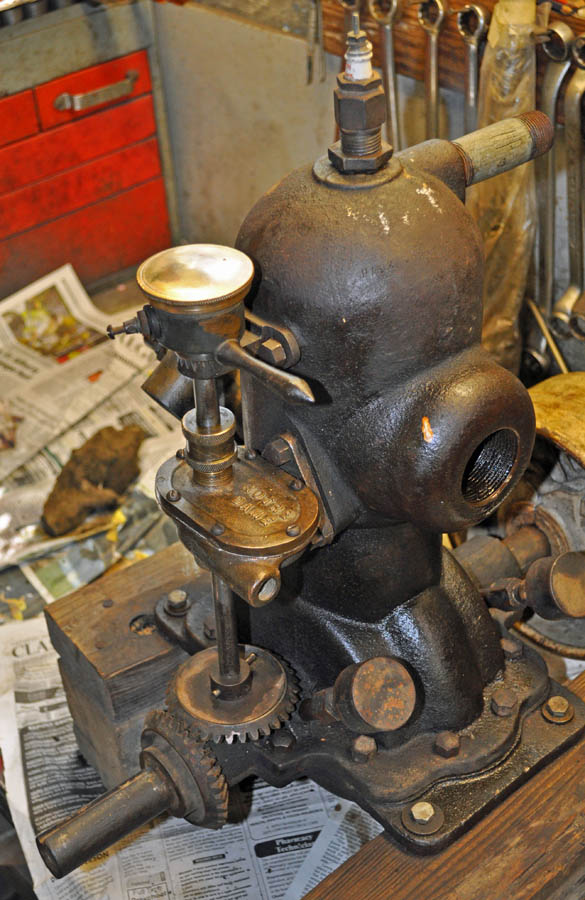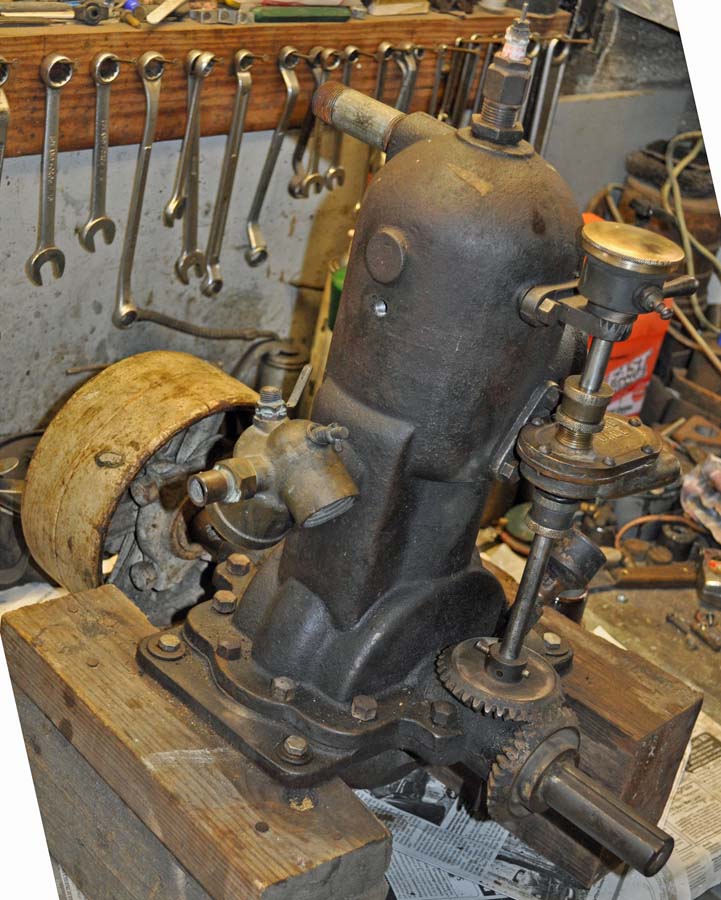|
| Dating 1-cyl Notre Dame engine |
| Author |
Message |
    
squareroot
Advanced Member
Username: squareroot
Post Number: 34
Registered: 09-2013

| | Posted on Thursday, September 03, 2015 - 07:30 pm: | 




|
What I assume is the student's name on a Notre Dame class-project engine appears on the jug:



An Internet search locates this description of a Notre Dame course offering in the University 1908 catalogue:
Gas Engine Construction
The complete working up from rough castings and forgings of a small type of gas engine This is part of the thesis work for students in the Short Program and requires the complete machining and assembling of the engine and must be preceded by Courses XI and XII Three hours a week for two terms.
The entry for this course in the 1916 Catalogue is identical, except the pre-requisite courses are numbered X and XI.
An Internet search for the student's name finds that a person of that name played on the 1918 Notre Dame football team.
Not knowing whether the student played football as a freshman, sophomore, junior, or senior, I reason that he could have stamped his name on his project between the fall of 1916 and spring of 1922.
Looking at the condition of the gears, bearings, rings, rod & piston, I wonder if he ever actually ran the engine?! |
    
matt_morehouse
Senior Member
Username: matt_morehouse
Post Number: 160
Registered: 12-2009
| | Posted on Thursday, September 03, 2015 - 09:22 pm: | 




|
I dated some "Dogs" in my long ago college years but never an engine. What's that like? |
    
miro
Senior Member
Username: miro
Post Number: 821
Registered: 11-2001

| | Posted on Friday, September 04, 2015 - 06:56 am: | 




|
The interesting part of the casting is the exhaust port.
It looks very similar to the Gray , in that, the passages allow for an easier gas flow from the internal port of the cylinder to the threaded exterior port.
It's also an early casting, because the exhaust port is threaded and not bolted. The change was probably due to the damage to the jug when you tried to undo an exhaust pipe that was well and truly rusted into that internal thread.
I can imagine some one with a great big pipe wrench , reefing on the pipe and hearing a crack as the jug finally released its grip. The crack being the moment when the cylinder split.
miro |
|
|
|


|


